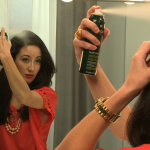Male pattern baldness, also known as androgenic alopecia, usually affects men in their early twenties. The progression of the condition along with the degree of hair loss varies from one person to another. Hair loss is a phenomenon that the human race collectively fears. There is no clear-cut way for a person to determine whether they will be affected by hair loss or not. Looking at your parents and relatives from both sides may give you a hint, but that is not a reliable method of determining the fate of your scalp. The situation, in the end, is a game of genes.
There is no shame in hair loss
Before delving deeper into the topic, we’d like to address the stigma regarding hair loss. There is no shame in baldness, and it certainly should not be the source of your self-doubt and decreased self-confidence. Most people associate hair loss with aging and disease, that is in essence where the stigma is born. However, if the condition is severely impacting your day to day life, then you should seek treatment. Whether you decide to be content with your baldness or choose to reverse it, the decision is yours. Your happiness is what matters most. There is no shame in either choice.
Hair loss treatments
Hair loss treatments vary depending on the area of hair loss the patients and how advanced the hair loss is.
1- Hair transplants
Hair transplants are the only permanent solution to androgenic alopecia. The technique depends entirely on the distinct pattern of the condition. The notorious pattern of hair loss in androgenic alopecia is the result of the differing sensitivities to androgens between the follicular units. Follicular units in the crown and the scalp tend to be androgen-sensitive whereas the follicular units in the back tend to be resistant to androgens. Hair transplants operate entirely on the fact the different characteristics are genetically determined and cannot be altered later on in life. Follicular units from the back of the scalp are extracted and relocated to areas of hair loss. With their androgen resistant properties unaffected; the grafts permanently initiate hair growth in the area.
As is the case with everything that is too true to be real, hair transplants do not treat every case of androgenic alopecia. Two conditions have to be available for the patient to be an eligible candidate: stable hair loss pattern and sufficient supply of donor regions. Differentiating androgen resistant follicular units from androgen sensitive is not possible. The best way to find out is to wait until hair loss stabilizes on a fixed pattern. Once, the pattern has maintained, areas of hair growth are then evaluated to determine whether enough grafts could be extracted to cover the area of hair loss without jeopardizing the donor regions to confirm the patient’s eligibility. Assessing your own scalp requires professional help. If you would like to have, your scalp evaluated, book a free online consultation with a medical specialist from Vera Clinic.
The side effects of hair transplants vary according to the method used.
Hair transplant techniques
Hair transplant techniques include follicular unit extraction (FUE) and follicular unit extraction (FUT). FUT is the first method of hair transplantation invented and the one with the most side-effects. The two techniques vary in the manner of extraction where FUT follows a more invasive extraction process compared to FUE. To obtain grafts with FUT, a strip from the scalp has to be excised and later dissected. The size of the wound requires stitching which leaves a linear scar and nerve damage around the area.
With FUE grafts are extracted individually with the use of a micro-sized punch which first isolates the grafts to prepare it for extraction with forceps. The method of graft harvesting in FUE does not cause nerve damage or visible scarring.
2- Minoxidil
Minoxidil is a solution that comes in serum or shampoo form and reverses hair loss in non-advanced cases. The mechanism of how the solution terminates hair loss is not fully understood. The patient has to apply the solution daily; otherwise, the medication may not work as effectively. Some of the side effects include increased body hair growth and irritation in the scalp.
3- Finasteride
Follicular units are sensitive to a hormone known as DHT which is a stronger version of testosterone. The 5-alpha-reductase enzyme catalysis the conversion of testosterone to DHT. Finasteride is a pill that has to be taken daily to inhibit the enzymatic activity of 5-alpha reductase. Finasteride is used for non-advanced hair loss as once the follicular units go into dormancy; the process can only be reversed with hair transplants.
Some of the side effects include swelling in the hands and feet, dizziness, weakness, and breast tenderness.







